Photo
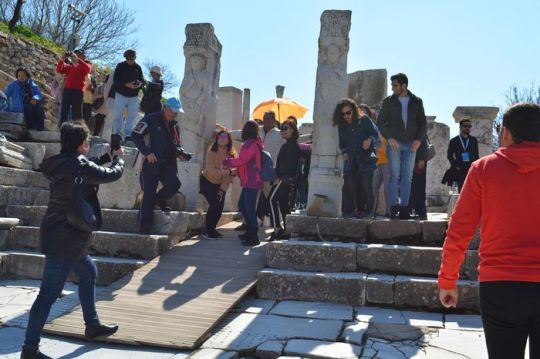
Insurgent Band of Bulgarians in Macedonia
Britain’s Role and Perception
The people in the Balkans understand that Britain has no interest in annexing their lands. They believe that if any nation tries to take over, they would face British military resistance. Britain often pressures Turkey to improve its governance in Macedonia, though Turkey rarely succeeds. The Balkan populations count on Britain to ensure European control over Macedonia and eventually grant them independence. Therefore, Britain is respected and seen as the one European power that, out of pure humanitarian motives, aims to deliver justice to the Macedonians.
Who Are the Macedonians?
The identity of the Macedonians is complex. Within Macedonia, you will find Bulgarians, Turks, Greeks, Serbians, and Romanians all calling themselves Macedonians. However, you won’t find a single “Macedonian” who isn’t also identified as one of these nationalities. Despite their different backgrounds, they all despise the Turks and love Macedonia. But each group sees Macedonia through the lens of their own national identity—whether it be Greek Macedonia, Bulgarian Macedonia, or Serbian Macedonia. They passionately deny the legitimacy of other groups claiming the Macedonian identity Bulgaria Tours.
The Macedonian Territory
Macedonia is more a geographical label than a unified national entity. It’s a part of the Turkish territory, home to various races, mainly Bulgarians and Greeks. Each ethnic group within Macedonia sees the region as rightfully theirs, which fuels ongoing conflicts.
Perspectives from Different Nationalities
The Romanian View
A Romanian consul in Monastir might say, “True, these people speak Bulgarian or Greek, but they are really Romanian, though they don’t know it. Therefore, when Macedonia is freed from the Turk, its natural and proper ruler is Romania.”
The Serbian View
A Serbian might argue, “Before the Turks came, the Serbian Empire stretched south to the sea. Macedonia should be Serbian.”
The Bulgarian View
A Bulgarian would assert, “Most of Macedonia is filled with Bulgarians. They speak Bulgarian and belong to the Bulgarian Church. Even those who speak Greek and are Orthodox have often been coerced; but they are Bulgarians. Macedonia is Bulgaria’s rightful heritage.”
The Greek View
Conversely, a Greek would retort, “The Bulgarians are schismatics and are not even true Christians. They force villages to leave the Orthodox Church and then claim them as Bulgarians. It’s nonsense! Macedonia is Greek.”
The conflicts in Macedonia are deeply rooted in ethnic and nationalistic disputes. Every group within Macedonia—be it Bulgarians, Greeks, Serbians, or Romanians—has a strong and often conflicting sense of identity and entitlement to the land. These tensions make Macedonia a volatile region, where historical claims and national pride frequently clash, leading to ongoing violence and unrest. Britain’s role as a neutral and humanitarian force is crucial, but the resolution of the Macedonian question remains complicated by the passionate and conflicting claims of its diverse inhabitants.
0 notes
Photo

Revealing Turkish Deception An Eye-Opening Experience
A Startling Revelation
My journey through Bulgaria has exposed me to a level of deceit that I never imagined possible. Despite my extensive travels and worldly experiences, nothing prepared me for the depth of human duplicity I encountered here. The Turks possess a remarkable ability to lie with coolness and plausibility that defies belief, leaving even the most skeptical minds deceived.
The Art of Deception
Their lies are delivered with an air of honesty, earnestness, and seriousness that is incredibly convincing. They speak with such conviction, aligning their words with your own beliefs and perceptions, making it seem impossible that they could be wrong. It’s only when you witness firsthand their calculated and shameless lies that you begin to grasp the extent of their deceitfulness City Tours Istanbul.
Blind Trust
In many cases, there is no way to verify the truth, leaving you no choice but to believe. It requires a unique mindset to distrust every word spoken, a mindset rarely found among Europeans who are continually deceived in their dealings with Orientals.
Personal Vulnerability
Even I, the writer of these lines, confess to being vulnerable to their manipulations. I realize that any Turk, like the Mutld-Serif of Philippopolis, could easily convince me of falsehoods unless I have tangible evidence to the contrary. I feel like a naive child in their hands, unable to doubt their words until confronted with undeniable proof.
Betrayal of Trust
The Turks’ actions further expose their deceitfulness. Upon learning of our visit to Perustitza, they swiftly relocated the villagers’ cattle to prevent us from intervening, callously disregarding their plight and selling off their livestock.
My experience in Bulgaria has shattered any illusions of trust and honesty I once held. The Turkish art of deception is a sobering reality that demands caution and skepticism in all dealings with them.
0 notes
Photo

Katip Qelebi's Treasury Reforms
Katip Qelebi’s treatise emphasized the importance of entrusting the state’s treasury to individuals of strong integrity and willpower. He advocated for fiscal responsibility, suggesting the maintenance of a budget reserve for at least one year. His rational proposals aimed to uphold legal sovereignty and ensure financial stability within the empire.
Unheeded Reforms and Political Turmoil
Despite Katip Qelebi’s recommendations and the efforts of Grand Vizier Tarhuncu Ahmet Pasha, progress toward treasury reform stalled. Tragically, Tarhuncu Ahmet Pasha faced capital punishment, signaling a setback in the quest for financial integrity Private Istanbul Tours.
Confiscations and Financial Seizures
Successive viziers failed to address the ongoing practice of confiscations. During Ib§ir Pasha’s tenure, the confiscation of the Minister of Finance in Mora led to the seizure of vast amounts of gold and silver. This wealth was redirected to the state treasury, perpetuating the cycle of financial control.
External Threats and Financial Strain
The blockade of the Dardanelles by the Russians during Siyavu§ Pasha’s term heightened tensions, amplifying the importance of the treasury amid external threats. The ongoing Cretan War further strained financial resources, underscoring the urgency of fiscal management during times of crisis.
Reform Initiatives Under Koprulii Mehmet Pasha
The appointment of Koprulii Mehmet Pasha as Grand Vizier marked a turning point in treasury reform. In 1656 A.D., he assumed office with full authority, initiating significant changes in financial governance. His tenure, alongside that of his son Fazil Ahmet Pasha, was instrumental in reshaping the Ottoman Imperial Treasury based on new principles.
Counting the Treasury and Reorganization
Koprulii Mehmet Pasha and his successors prioritized the meticulous counting of the treasury and the reorganization of register books. Their efforts stemmed from the financial challenges faced by the state in the mid-17th century, exacerbated by tensions with Russia. These reforms laid the groundwork for a more sustainable and efficient financial system within the empire.
0 notes
Photo

Tragic Tales Unveiled
As we continued our journey through the ravaged village, each step revealed new horrors—testaments to the unspeakable cruelty inflicted upon its inhabitants.
A Heartbreaking Encounter
At the next house, a grieving man halted our progress. With tearful eyes, he pointed to the spot where his blind brother had perished in the flames, his remains reduced to calcined bones. Despite his anguish, he failed to grasp the solace that his brother’s release from suffering should bring, instead consumed by inconsolable grief.
Innocent Victims
Across the street, the grim sight of two children’s skeletons lay side by side, their tiny skulls marked by ghastly sabre cuts. The massacre had claimed the lives of countless innocent children, many subjected to unimaginable horrors. Eyewitnesses recounted chilling tales of infants impaled on bayonets, a grotesque manifestation of twisted beliefs.
Twisted Beliefs
The perpetrators of these atrocities acted upon a perverse interpretation of religious doctrine, believing that the slaughter of infidels, regardless of age or innocence, guaranteed them a place in paradise. In their misguided zeal, they spared no one, even ripping unborn infants from their mothers’ wombs to swell their tally of victims Tour Packages Balkan.
Streets of Sorrow
As we ventured further into the heart of the town, the streets became a haunting labyrinth of death and despair. Human remains littered the ground, with hardly a house left untouched by the carnage. Women, consumed by grief, wandered aimlessly, their mournful cries echoing through the desolate streets.
Agony Unveiled
In one heartbreaking moment, a distraught mother led us to a corner where the remains of her daughter lay, her once-flowing hair now entangled amidst the rubble. The mother’s anguished cries reverberated off the walls, a stark reminder of the unbearable pain inflicted upon the innocent.
Unimaginable Suffering
As we bore witness to the anguish of the survivors, it became clear that the scars of this tragedy would linger for generations to come. Each wail, each sob, served as a poignant reminder of the profound loss endured by the people of Batak.
0 notes
Photo
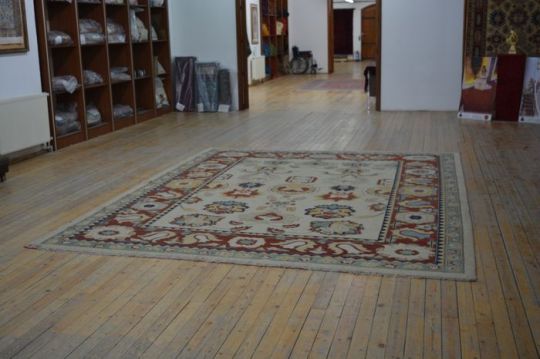
Unveiling Historical Landmarks Churches of Significance
The Church of “Sveti Dimitur” Birthplace of Bulgarian Resistance
Dating back to the Asenevstsi dynasty in the early 12th century, the Church of “Sveti Dimitur” holds special significance in Bulgarian history. It was established by brothers Asen and Petur and served as the focal point for the uprising against Byzantine rule. The church, depicted in the Plan of the Church “Sveti Dimitur,” showcases original construction from 1185, with later additions in the 13th century.
The Church “Sveti Chetiredesete Muchenici” Commemorating Victory
Situated on the left bank of the river, at the foot of the western side of Tsaravets hill, the Church “Sveti Chetiredesete Muchenici” holds deep historical significance. Built to commemorate the victory at the battle of Klokotnitsa on March 9, 1230, where Tzar Ivan Asen the Second triumphed over Kir Teodor Komnin. Legend has it that the church was dedicated to the Forty Martyrs, whose aid was believed to have secured victory.
Inside the Church Testament to History
Within the church lie six columns, three bearing inscriptions detailing the region’s history. These include references to Khan Krum of Bulgaria, Khan Omurtag, and Tzar Ivan the Second, celebrating Bulgaria’s expansion “to the three seas – Black Sea, Marmara, and Mediterranean.” Additionally, the church serves as a repository for regional relics, including the burial site of Tzar Ivan the Second and his wife Irina within the south wall Private Turkey Tours.
The Monastery of “Velikata Lavra” A Center of Spiritual Life
Established in the mid-13th century around the Church “Sveti Chetiredesete Muchenici,” the monastery of “Velikata Lavra” played a crucial role in the spiritual landscape of Turnovo. Excavations from 1973 to 1985 unearthed the east wing of the monastery, containing the refectory and Abbot’s quarters, alongside remnants of the west and south wings. These discoveries offer insights into the daily life and rituals of the monks who once inhabited this sacred space.
0 notes
Photo
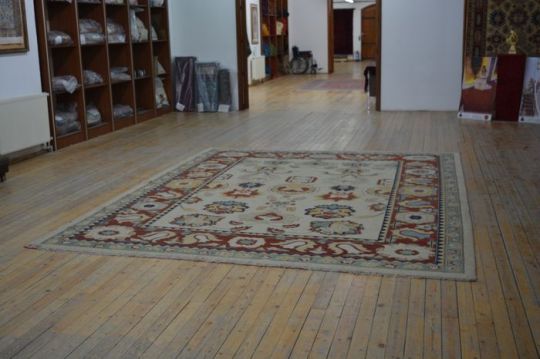
Unveiling Historical Landmarks Churches of Significance
The Church of “Sveti Dimitur” Birthplace of Bulgarian Resistance
Dating back to the Asenevstsi dynasty in the early 12th century, the Church of “Sveti Dimitur” holds special significance in Bulgarian history. It was established by brothers Asen and Petur and served as the focal point for the uprising against Byzantine rule. The church, depicted in the Plan of the Church “Sveti Dimitur,” showcases original construction from 1185, with later additions in the 13th century.
The Church “Sveti Chetiredesete Muchenici” Commemorating Victory
Situated on the left bank of the river, at the foot of the western side of Tsaravets hill, the Church “Sveti Chetiredesete Muchenici” holds deep historical significance. Built to commemorate the victory at the battle of Klokotnitsa on March 9, 1230, where Tzar Ivan Asen the Second triumphed over Kir Teodor Komnin. Legend has it that the church was dedicated to the Forty Martyrs, whose aid was believed to have secured victory.
Inside the Church Testament to History
Within the church lie six columns, three bearing inscriptions detailing the region’s history. These include references to Khan Krum of Bulgaria, Khan Omurtag, and Tzar Ivan the Second, celebrating Bulgaria’s expansion “to the three seas – Black Sea, Marmara, and Mediterranean.” Additionally, the church serves as a repository for regional relics, including the burial site of Tzar Ivan the Second and his wife Irina within the south wall Private Turkey Tours.
The Monastery of “Velikata Lavra” A Center of Spiritual Life
Established in the mid-13th century around the Church “Sveti Chetiredesete Muchenici,” the monastery of “Velikata Lavra” played a crucial role in the spiritual landscape of Turnovo. Excavations from 1973 to 1985 unearthed the east wing of the monastery, containing the refectory and Abbot’s quarters, alongside remnants of the west and south wings. These discoveries offer insights into the daily life and rituals of the monks who once inhabited this sacred space.
0 notes
Photo
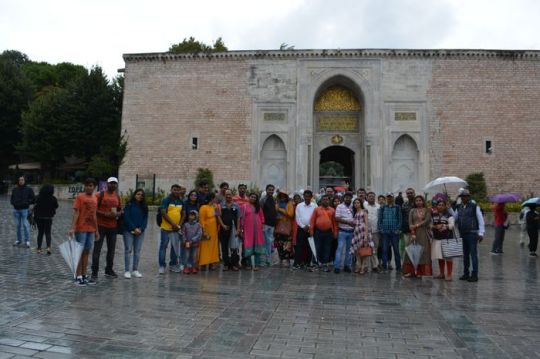
The National Revival
Struggles for Identity and Independence
Father Paisi’s Call to Remember (1762)
Amid the dark period of Bulgarian history, an unknown Bulgarian monk named Father Paisi emerged at the Mt. Athos monastery. Distressed by the rapid loss of Bulgarian identity, he wrote the first Bulgarian history, aiming to revive the glories of Bulgaria’s past when Bulgarian kings defeated Byzantium. Father Paisi’s history, completed in 1762, emphasized pride in being Bulgarian.
Dual Aspirations: Church Independence and Political Freedom
Bulgarian national aspirations focused on two goals: church independence and political freedom. Initially modest, the Bulgarians sought bishops who spoke Bulgarian and later requested Bulgarian bishops. Ultimately, their goal was an independent Bulgarian Church. The Greek Orthodox Patriarchy opposed these requests, desiring control over the Bulgarian Church. However, the Ottoman Empire ruling hierarchy did not hinder the Bulgarian national revival. In 1871, the Turkish recognition of an independent Bulgarian Church led to the establishment of the Bulgarian Exarchate, despite opposition from the Greek Orthodox Patriarchy City Tours Istanbul.
Political Liberation Movement
Simultaneously, a revolutionary movement for political liberation gained momentum, centered in Romania. The Ottoman Empire’s decline and the rising aspirations of the subjugated Slavic peoples prompted uprisings, notably one brutally crushed in Bulgaria in 1876. The “Bulgarian Massacres” spurred diplomatic intervention by England and Russia. At the Treaty of San Stefano, Bulgaria gained favorable terms, but the subsequent Berlin Congress divided Bulgaria into three parts: Bulgaria proper, Eastern Rumelia as an autonomous province, and Macedonia and Thrace under Turkish control.
Russo-Turkish War and Division (1877-1878)
In response to the failure of the Berlin Congress agreements, Russia declared war on Turkey in the Russo-Turkish War of 1877-1878. England supported Turkey due to concerns about its ship rights in the Balkan Straits. The Treaty of San Stefano was replaced by the Berlin Congress, dividing Bulgaria into three parts, complicating the path to Bulgarian autonomy and independence.
0 notes
Photo

The Turmoil and Transition: Bulgaria in the Aftermath of World War I
Ferdinand’s Dilemma
As World War I drew to a close, King Ferdinand of Bulgaria found himself at the helm of a mutinous army and a nation on the brink of rebellion. Faced with internal unrest and external defeats, Ferdinand sought a change in government to navigate Bulgaria through the turbulent post-war period.
Malinov’s Leadership and Entente’s Blow
Prime Minister Malinov, leader of the Democratic Party, enjoyed favor in Paris and London. However, by September 1918, it was too late to salvage Bulgaria’s fortunes. The Bulgarian army suffered a significant defeat by the Entente forces in Macedonia, leading to a humiliating partial military occupation in Thessaloniki on September 29. Forced to disband its army, Ferdinand saw abdication as the only recourse and passed the throne to his first-born son, Boris, on October 3, 1918.
The Unfavorable Winds of Peace
Despite the change in leadership, Bulgaria faced an uncertain future at the peace conference. The Treaty of Neuilly, confirmed on November 27, 1919, delivered a severe blow by depriving Bulgaria of its access to the Aegean. This outcome marked the onset of a second national catastrophe, leaving the nation grappling with the repercussions of war and unfavorable diplomatic terms.
The Integrator
With King Boris III at the helm, Bulgaria entered a new era characterized by reconstruction and attempts at integration. Boris III, known as “The Integrator,” faced the formidable task of rebuilding a nation scarred by war and diplomatic setbacks Sightseeing Turkey.
Stamboliyski Regime: Coping with Crisis
The aftermath of the war brought about an economic crisis in Bulgaria, fueling discontent and resentment against parties perceived to have led the country into military conflicts. Alexander Stamboliyski, leader of the Agrarian Union party, assumed leadership, tasked with signing the Treaty of Neuilly. Stamboliyski’s regime grappled with strikes, inflation, and a ration system while navigating the challenges of post-war recovery.
A Nation in Flux
As Bulgaria transitioned from the tumultuous years of World War I, it faced internal and external challenges that shaped its trajectory in the interwar period. The reign of King Boris III and the Stamboliyski regime marked pivotal moments in Bulgaria’s efforts to rebuild, integrate, and find stability amidst the aftermath of a devastating war.
0 notes
Photo

A Desperate Bid for Ceasefire Ends in Horror
A Glimmer of Hope Rich Women’s Volunteer Mission
In the face of relentless bombardment and unspeakable horror, the besieged people of the village clung to a glimmer of hope. Two courageous women, among the wealthiest in the village, stepped forward with a daring plan to halt the firing. Fueled by desperation, these women resolved to make an extraordinary effort to reach the Turkish general, hoping that their status and adornments might influence him.
Dressing for Desperation Magnificence as a Shield
The Armenian girl recounts the poignant details of their preparation. Despite the dire circumstances, the women meticulously arranged their dresses, aiming to present themselves in the most imposing manner possible. Their meager collection of jewelry, worn out of modesty or perhaps as an attempt to overawe the Bashi-Bazouks, became part of their makeshift magnificence. It was a desperate strategy borne out of the belief that their appearance might sway the hearts of their oppressors.
A Tragic Encounter Violation and Death
The noble mission took a nightmarish turn as the two women, clad in their makeshift magnificence, encountered the merciless Bashi-Bazouks. Rather than finding protection, the women were seized, stripped of their jewels and clothing, subjected to heinous violations, and ultimately killed. The very act intended to appeal for mercy turned into a horrifying ordeal Bulgaria Holidays, shattering the last remnants of hope.
Broken Promise Aziz Pacha’s Betrayal
Despite the Turkish general’s promise of safety, the lack of a proper escort proved fatal for the brave messengers. The betrayal by the Bashi-Bazouks unfolded in a gruesome manner, snuffing out the lives of those who sought peace. The old man, sent back with the message, became the bearer of devastating news, further eroding the trust of those sheltering in the church.
Night of Desolation Fearful Plight in the Church
Friday night descended upon the church with an unrelenting barrage of shells from Aziz Pacha. The surrounding slopes echoed with the sporadic gunfire of the Bashi-Bazouks, met with a haunting silence from within the church. The people, haunted by the fate of the messengers, chose to remain within the sanctuary, their condition plunging into unimaginable depths of fear and despair.
Conclusion A Heart-Wrenching Turn of Events
The tragic misstep in the pursuit of a ceasefire exposes the cruel realities of war. The hopeful endeavor of two courageous women ended in unspeakable horror, highlighting the depths of brutality inflicted upon innocent lives. As Aziz Pacha’s betrayal reverberates, the night of desolation in the church stands as a stark testament to the relentless suffering endured by the besieged villagers.
0 notes
Photo

A Desperate Bid for Ceasefire Ends in Horror
A Glimmer of Hope Rich Women’s Volunteer Mission
In the face of relentless bombardment and unspeakable horror, the besieged people of the village clung to a glimmer of hope. Two courageous women, among the wealthiest in the village, stepped forward with a daring plan to halt the firing. Fueled by desperation, these women resolved to make an extraordinary effort to reach the Turkish general, hoping that their status and adornments might influence him.
Dressing for Desperation Magnificence as a Shield
The Armenian girl recounts the poignant details of their preparation. Despite the dire circumstances, the women meticulously arranged their dresses, aiming to present themselves in the most imposing manner possible. Their meager collection of jewelry, worn out of modesty or perhaps as an attempt to overawe the Bashi-Bazouks, became part of their makeshift magnificence. It was a desperate strategy borne out of the belief that their appearance might sway the hearts of their oppressors.
A Tragic Encounter Violation and Death
The noble mission took a nightmarish turn as the two women, clad in their makeshift magnificence, encountered the merciless Bashi-Bazouks. Rather than finding protection, the women were seized, stripped of their jewels and clothing, subjected to heinous violations, and ultimately killed. The very act intended to appeal for mercy turned into a horrifying ordeal Bulgaria Holidays, shattering the last remnants of hope.
Broken Promise Aziz Pacha’s Betrayal
Despite the Turkish general’s promise of safety, the lack of a proper escort proved fatal for the brave messengers. The betrayal by the Bashi-Bazouks unfolded in a gruesome manner, snuffing out the lives of those who sought peace. The old man, sent back with the message, became the bearer of devastating news, further eroding the trust of those sheltering in the church.
Night of Desolation Fearful Plight in the Church
Friday night descended upon the church with an unrelenting barrage of shells from Aziz Pacha. The surrounding slopes echoed with the sporadic gunfire of the Bashi-Bazouks, met with a haunting silence from within the church. The people, haunted by the fate of the messengers, chose to remain within the sanctuary, their condition plunging into unimaginable depths of fear and despair.
Conclusion A Heart-Wrenching Turn of Events
The tragic misstep in the pursuit of a ceasefire exposes the cruel realities of war. The hopeful endeavor of two courageous women ended in unspeakable horror, highlighting the depths of brutality inflicted upon innocent lives. As Aziz Pacha’s betrayal reverberates, the night of desolation in the church stands as a stark testament to the relentless suffering endured by the besieged villagers.
0 notes
Photo
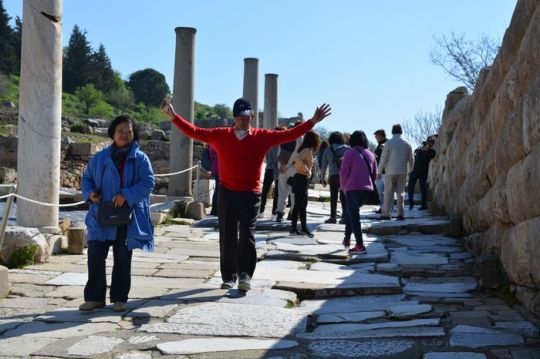
A Desperate Bid for Ceasefire Ends in Horror
A Glimmer of Hope Rich Women’s Volunteer Mission
In the face of relentless bombardment and unspeakable horror, the besieged people of the village clung to a glimmer of hope. Two courageous women, among the wealthiest in the village, stepped forward with a daring plan to halt the firing. Fueled by desperation, these women resolved to make an extraordinary effort to reach the Turkish general, hoping that their status and adornments might influence him.
Dressing for Desperation Magnificence as a Shield
The Armenian girl recounts the poignant details of their preparation. Despite the dire circumstances, the women meticulously arranged their dresses, aiming to present themselves in the most imposing manner possible. Their meager collection of jewelry, worn out of modesty or perhaps as an attempt to overawe the Bashi-Bazouks, became part of their makeshift magnificence. It was a desperate strategy borne out of the belief that their appearance might sway the hearts of their oppressors.
A Tragic Encounter Violation and Death
The noble mission took a nightmarish turn as the two women, clad in their makeshift magnificence, encountered the merciless Bashi-Bazouks. Rather than finding protection, the women were seized, stripped of their jewels and clothing, subjected to heinous violations, and ultimately killed. The very act intended to appeal for mercy turned into a horrifying ordeal Bulgaria Holidays, shattering the last remnants of hope.
Broken Promise Aziz Pacha’s Betrayal
Despite the Turkish general’s promise of safety, the lack of a proper escort proved fatal for the brave messengers. The betrayal by the Bashi-Bazouks unfolded in a gruesome manner, snuffing out the lives of those who sought peace. The old man, sent back with the message, became the bearer of devastating news, further eroding the trust of those sheltering in the church.
Night of Desolation Fearful Plight in the Church
Friday night descended upon the church with an unrelenting barrage of shells from Aziz Pacha. The surrounding slopes echoed with the sporadic gunfire of the Bashi-Bazouks, met with a haunting silence from within the church. The people, haunted by the fate of the messengers, chose to remain within the sanctuary, their condition plunging into unimaginable depths of fear and despair.
Conclusion A Heart-Wrenching Turn of Events
The tragic misstep in the pursuit of a ceasefire exposes the cruel realities of war. The hopeful endeavor of two courageous women ended in unspeakable horror, highlighting the depths of brutality inflicted upon innocent lives. As Aziz Pacha’s betrayal reverberates, the night of desolation in the church stands as a stark testament to the relentless suffering endured by the besieged villagers.
0 notes
Photo

Shattered Sanctity
The Brutal Assault on Perustitza’s Churchyard
Perustitza, a village thrust into the relentless jaws of conflict, bore witness to a horrifying chapter when the sacred grounds of its churchyard became the target of relentless artillery bombardment. The echoes of devastation lingered in the ploughed-up earth, marked with the scars of shells that tore through the air with unrelenting force. In this harrowing account, the churchyard, once a place of solace, became a battlefield where the vulnerability of the innocent collided with the brutality of war.
The Armenian girl’s testimony unveils a grim reality as she describes the agonizing fate of the women and children who sought refuge within the church. Packed so densely that sitting or lying down became impossible, the church transformed into a crowded sanctuary of despair. Here, amidst the walls scarred by the impact of shells, a tragedy unfolded as three projectiles penetrated the round windows in the gable ends, detonating within the masses of defenseless women and children.
The Unseen Horrors Shells Pierce Perustitza’s Sanctuary
As the investigation unfolded, the evidence became chillingly clear – the churchyard of Perustitza had become a target of unbridled destruction. The marks left by the shells on the church’s walls painted a haunting picture of the relentless assault that unfolded within the sacred space. The very sanctity of the churchyard, a haven in times of turmoil, crumbled under the weight of artillery bombardment.
The Armenian girl’s account, a poignant testament to the horrors witnessed, spoke of the unimaginable conditions within the church. As shells tore through the round windows, the tightly packed mass of women and children became the tragic recipients of this merciless onslaught. The visible marks of two shells, striking perilously close to one of these windows, revealed the precision with which the assailants targeted the vulnerable sanctuary Balkan Tours.
Contrary accounts emerged regarding the number of shells that breached the church’s defenses – the villagers claiming five, while the Armenian girl recounted three. In the face of such brutality, the minutiae of the count pales in comparison to the undeniable truth that the sanctity of Perustitza’s churchyard was violated, leaving in its wake a trail of devastation and heartbreak.
The haunting reality of the shattered churchyard calls for reflection on the indiscriminate nature of warfare, where even places of worship and refuge are not spared. Perustitza’s sanctuary, once a symbol of solace and community, became a battleground stained with the innocent blood of those seeking shelter. In the face of such horrors, the scars on the church walls serve as a somber reminder of the enduring impact of conflict on the lives of the defenseless.
0 notes
Photo

MacGahan Arrived Philippopolis
No journalist was ever more suited to such a mission as was MacGahan. He arrived in Philippopolis on fitly 23rd and immediately set about his task. On the other hand, the British government instructed Sir Henry Elliot, ambassador to Constantinople, to head an official inquiry, and Walter Baring, secretary of the Legation, was given the task.
At the suggestion of Dr. George Washburn, director of Robert College, the American plenipotentiary minister Maynard decided in his turn to inquire into the atrocities and entrusted the General-consul Eugene Schuyler, a well-known expert of his time on Russian foreign policy, with this third fact-finding expedition. The result was three parallel investigations led respectively by MacGahan, Schuyler and Baring.
Schuyler and Baring (the latter escorted by Guaracino, an official at the British consular service and self-avowed philo-turk) became the diplomatic satellites of the young journalist, and if Schuyler’s report published on August 28th, was accepted as a competent confirmation of MacGahan’s accounts City Tour Istanbul, the British diplomat refuted the conclusions he had previously been instructed to draw.
Bulgarian soil
MacGahan’s method of investigation is that of direct contact with the reality of the situation. In this relation is shown the intense humanism and combative attitude of the author in the face of all that is humiliating and a defiling of humanity. The principal figure in these reports is the martyred Bulgarian people and the Bulgarian soil, charred and bloodsoaked by the Turkish secular tyrant.
At Panagurishte, on the fortifications stained with blood, in the church at Batak, transformed into a horrible graveyard, before the heaped human skulls, amidst the crowds of widows and orphans, flocking beneath a moaning wafting heavenwards, amidst the witnesses of unseen human exploit of honor in Perustitsa, MacGahan followed in the wake of the insurgents and fulfilled the duty imposed on him by his conscience.
0 notes
Photo
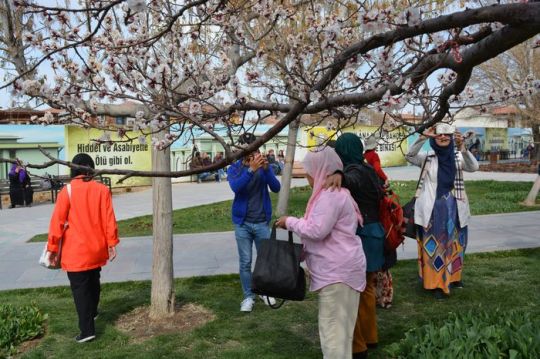
PHILIPPOPOLIS August 10
PHILIPPOPOLIS, August 10
I had not been here a day when I heard of a personage whom the Turks jeeringly spoke of as the “ Queen of the Bulgarians.’’
Sclavonic Empire
This Queen, it appeared, was in prison, and was, I was given to understand, a very contemptible sort of person indeed. I learned that she had headed the insurrection, had been crowned Queen, had promenaded the streets of her nativo village on horseback, bearing a flag like another Jeanne d’arc, besides committing a variety of other follies which seemed to form the subject of much merriment among the Turks here. Naturally I conceived a great desire to make the acquaintance of this fallen Queen, and see what sort of person it was who aspired to be the leader of a new Sclavonic Empire.
I had no difficulty in accomplishing this, as Mr. Schuyler had no sooner heard of her than he demanded and obtained permission to see her, and kindly allowed me to accompany him. She was confined in the house of an Imam, or priest, with another Bulgarian woman from the same village, and these were the only two women we found in prison upon our arrival here.
Dr. Vlados
We were conducted to the Imam’s house by Dr. Vlados, a Greek physician, who has been charged with the task of looking after the health of the prisoners. After a long walk through the crooked, narrow, stony streets, we brought up before a low, rickety building, partly of wood, partly of rough unhewn stones, and found ourselves before a pair of low, double wooden doors opening outwards into the street Private Tours Istanbul.
The doctor knocked, and after a prolonged colloquy with a voice inside, the door was opened about half an inch, and we caught sight of a harsh-looking, partly- veiled female face, that seemed to be regarding us with some suspicion.
Apparently, this preliminary survey was satisfactory, for the door was thrown open a little wider, and a slight girlish figure stepped forward and stood in the doorway, followed by an elderly matron, tall and stalwart almost as a man, who stood behind and gazed at us over the girl’s head with tearful eyes.
0 notes
Photo
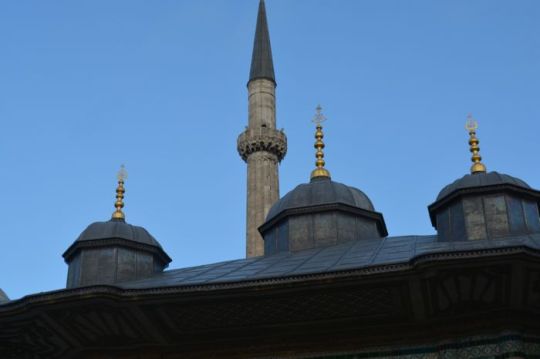
Against the Persians and Hellas
Thracian kingdoms waged wars against the Persians and Hellas for centuries. But the powerful Macedonian state of Philip II managed to crash them. It was his son, Alexander the Great, who quickly appreciated the military virtues of the Thracians and let them join the multilingual Macedonian army. After his death in 323 B. C. the Thracian king Seuth III succeeded to restore partially the former state and so the walls of the new capital city of Seuthopolis rose close to the location of present-day Bulgarian town of Kazanluk.
During the 3rd century B.C. the Romans managed to conquer the ancient Thracian lands. Later, in 74 B. C., a slave of Thracian origin who ‘graduated’ a gladiator school and became famous under the name of Spartacus headed the most continuous and mass insurrection in ancient Rome. That was the period of the so called Romanization of the Thracian world which continued until the 4th century A. D. when “The Great Migration of Peoples” began and the Thracians had to keep Celts, Huns, Goths, Avars and other barbarian tribes from invading their lands. In these circumstances the Thracians – partially Hellenized and Romanized, and having their rich and complex cultural heritage – had to stand before one of the most significant historical events for them: the disintegration of the Roman Empire in 395. In less than a century its western half was put to a collapse under the ravaging barbarian tribes from the north but the eastern part survived under the name of Byzantium with Constantinople as a capital city. Those were the days when the founders of the First Bulgarian Kingdom stepped Private Tours Balkan onto their future land…
Slavs and Proto-Bulgarians
During the 4lh to 7lh centuries the Slavs were the most multitudinous peoples in Europe.
They belonged to the Indo-European linguistic family and historians classify them usually in three main divisions: West Slavs include Poles, Czechs, Slovaks and the Wends who lived in Germany east of the river Elbe; East Slavs include Great Russians,
Little Russians (Ukrainians) and White Russians (Belorussians);
South Slavs include Serbs
Croats, Slovenes, Macedonians and Bulgarians. Originally the Slavs inhabited the lands to the north of the Carpathian Mountains but by the beginning of the 6th century Slavic tribes undertook marches to the south and crossed the Danube to loot in the territory of the Byzantine Empire. At that time a tribe of Tatar nomads, the Avars, established a kingdom (407- 653) in central Asia. In 558 they crossed the Urals and settled in Dacia after which started threatening the western countries and, of course, Constantinople. The Avars forced some of the Slavic tribes to settle permanently in various regions of the Balkan Peninsula. So were differentiated the “Bulgarian group” – which stayed in Moesia, Thrace and Macedonia – and the Serbo-Croatian group which gradually withdrew to the western half of the peninsula.
0 notes
Photo
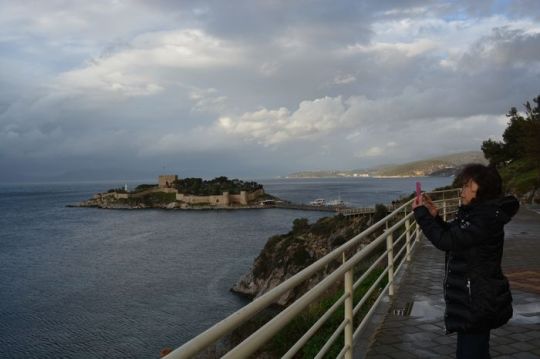
SECOND FLOOR
Vestibule.—On the floor a mosaic from Ourfa.
ROOM NO. 8.—In the show cases on the walls: a rich collection of coloured glass from Phoenicia and Syria.
On the Floor.—A large mosaic from Cos representing Orpheus dompting the animals with his lyre. In the various glass cases several terra-cotta figures mostly from Myrina.
Narrow Passage.—Two glass cases on the walls with terra-cottas, etc.
ROOM NO. 9.—Archaic pottery from Gordion, Pateli, etc.
ROOM NO. 10. — Yases from Rhodes and Lampsacus.
ROOM NO. 11.—On the left near the railing: the Siloam inscription. It is of limestone, and was discovered in 1880 at Jerusalem. The inscription is in Phoenician characters, and runs thus:—
Boring was effected
. . . the boring; and here is where the boring was effected ; yet . . .
And the pickaxes were directed against each other when, just as there remained but three ells more to be bored, voices were heard calling to one another, for there was a gallery in the rock on the south side and on the north side ; and the day The boring was completed the workmen found themselves face to face, and the pickaxes against each other [that is to say, they met each other], and The water flowed from the spring to the fountain, a distance of one thousand ells ; and The height of the rock above the travellers’ heads was one hundred ells.
The canal was cut to convey the waters of the spring of Gihon outside the city walls to that of Siloam within. Passages in the Books of Kings and Chronicles seem to attribute this work to King Hezekiah, in the 8th cent. B.C. (Imperial Ottoman Museum Catalogue.)
On the Right.—The stele from the Temple of Jerusalem in limestone with a Greek inscription on it. This unique monument was discovered in 1871 by M. Clermont-Gauneau, built into the wall of a ruined Medresseh (Mohammedan convent) in the vicinity of Omar’s mosque. It originally stood in the Temple to mark the limit which Gentiles were not allowed to pass on pain of death. The inscription runs thus :
0 notes
Photo

The Greek inhabitants
The Greek inhabitants are descendants of the ancient Byzantines and Greeks, and possess all the virtues and vices of their ancestors. They are the most numerous of all the nationalities which compose the population of the city.
The Armenians follow close upon the Greeks in numbers, and are the mixed descendants of the people of ancient Armenia.
The Jews are pretty numerous, and are, with some exceptions, the poorest and most wretched of all the races inhabiting Constantinople.
Many of the Greeks, Armenians, and Jews are employed under Government; but the great majority of them are merchants, shop-keepers, artisans, hawkers, labourers, etc. They are officially styled rayah or the herd a term which the Turks apply to the non – Mussulman subjects of the Porte, all of whom, be it added, are exempt from military service, but are liable, in lieu thereof, to a poll- tax.
The Levantines are fewer in number than any of the foregoing, and cannot be said to belong to any particular race. They are the half-breed descendants of Europeans who have settled in Turkey and have intermarried with native Christian women; as a consequence few of these Levantines are rayaTis, the majority being subjects of various European powers. They are for the most part engaged in commercial pursuits.
There is also a fair sprinkling of European residents connected either with their respective Embassies or Consulates, or else representing European firms guided istanbul tours.
Moslem or Muhammadan religion
Religion.—The Turks are one and all, without exception, of the Moslem or Muhammadan religion, founded by their prophet, Muhammad, the author of the Koran. This book is at once the basis of Islamism, as the Muhammadan creed is called, and of Turkish law; it was compiled and published two years after the prophet’s death by his father- in-law Abu-bekr. The Koran contains 114 chapters, 6000 verses, 77,639 words, and 323,015 letters. It is believed by all Moslems to have been delivered to Muhammad by the archangel Gabriel during the twenty-three years which intervened between the commencement of Muhammad’s prophetic career and his death.
Muhammad’s commandments are five in number, and enjoin his followers to pray five times a day, to bestow alms on the poor, to perform the pilgrimage to Mecca, to keep the fast of Ramazan, and to observe bodily cleanliness as far as possible. Four more commandments, which, however, are not obligatory, further enjoin all true believers not to break the Muhammadan Sabbath (Friday), to practise circumcision, to abstain from wine and gambling, and to eschew pork and game. In the Koran the prophet exhorts his followers to believe in one God, in the angels, in the other prophets, set down at 124,000, and in himself; in the five books of Revelations, the Psalms, the Old Testament, the Koran, the resurrection of the dead, the last judgment, and the existence of Heaven and Hell.
0 notes